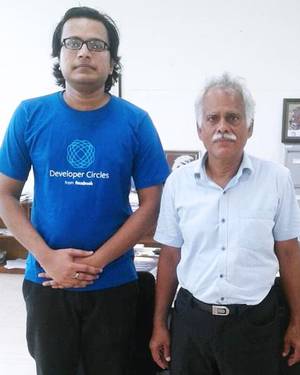
The AI identifies precancerous tissue, and also the stage of progression in minutes
The morphology of healthy and precancerous cervical tissue sites are quite different, and light that gets scattered from these tissues varies accordingly. Yet, it is difficult to discern with naked eyes the subtle differences in the scattered light characteristics of normal and precancerous tissue. Now, an artificial intelligence-based algorithm developed by a team of researchers from Indian Institute of Science Education and Research (IISER) Kolkata and Indian Institute of Technology Kanpur makes this possible.
The algorithm developed by the team not only differentiates normal and precancerous tissue but also makes it possible to tell different stages of progression of the disease within a few minutes and with accuracy exceeding 95%. This becomes possible as the refractive index of the tissue is different in the case of healthy and precancerous cells, and this keeps varying as the disease progresses.
“The microstructure of normal tissue is uniform but as disease progresses the tissue microstructure becomes complex and different. Based on this correlation, we created a novel light scattering-based method to identify these unique microstructures for detecting cancer progression,” says Sabyasachi Mukhopadhyay from IISER Kolkata and first author of a paper published in the Journal of Biomedical Optics.
Elaborating on this further, Prof. Prasanta K. Panigrahi from IISER Kolkata and corresponding author of the paper says: “The collagen network is more ordered in normal tissues but breaks down progressively as cancer progresses. This kind of change in tissue morphology can be picked up by light scattering.” White light spectroscopy (340-800nm) was used for the study.
Statistical biomarker
The change in scattered light as disease progresses is marked by a change in tissue refractive index. The team has quantified the changes in tissue refractive index using a statistical biomarker — multifractal detrended fluctuation analysis (MFDFA). The statistical biomarker has two parameters (Hurst exponent and width of singularity spectrum) that help in quantifying the spectroscopy dataset.
While MFDFA provides quantification of light scattered from the tissues, artificial intelligence-based algorithms such as hidden Markov model (HMM) and support vector machine (SVM) help in discriminating the data and classifying healthy and different grades of cancer tissues.
“The classification of healthy and precancerous cells becomes robust by converting the information obtained from the scattered light into characteristic tissue-specific signature. The signature captures the variations in tissue morphology,” says Prof. Panigrahi.
“The MFDFA-HMM integrated algorithm performed better than the MFDFA-SVM algorithm for detection of early-stage cancer,” says Mukhopadhyay. “The algorithms were tested on in vitro cancer samples.”
In vivo samples
The team is expanding the investigations to study in vivo samples for precancer detection. While the accuracy achieved using in vitro samples was over 95%, based on a study of a few in vivo samples the accuracy is over 90%.
“In the case of in vitro samples we were able to discriminate between grade 1 and grade 2 cancer,” says Prof. Nirmalya Ghosh from IISER Kolkata and one of the authors of the paper. “More testing is needed using in vivo samples.”
“Superficial cancers such as oral and cervical cancers can be studied using this technique. And by integrating it with an endoscopic probe that uses optical fibre to deliver white light and surrounding fibres to collect the scattered light we can study cancers inside the body,” says Prof. Ghosh.
source: http://www.thehindu.com / The Hindu / Home> Sci-Tech> Science / by R. Prasad / December 23rd, 2017